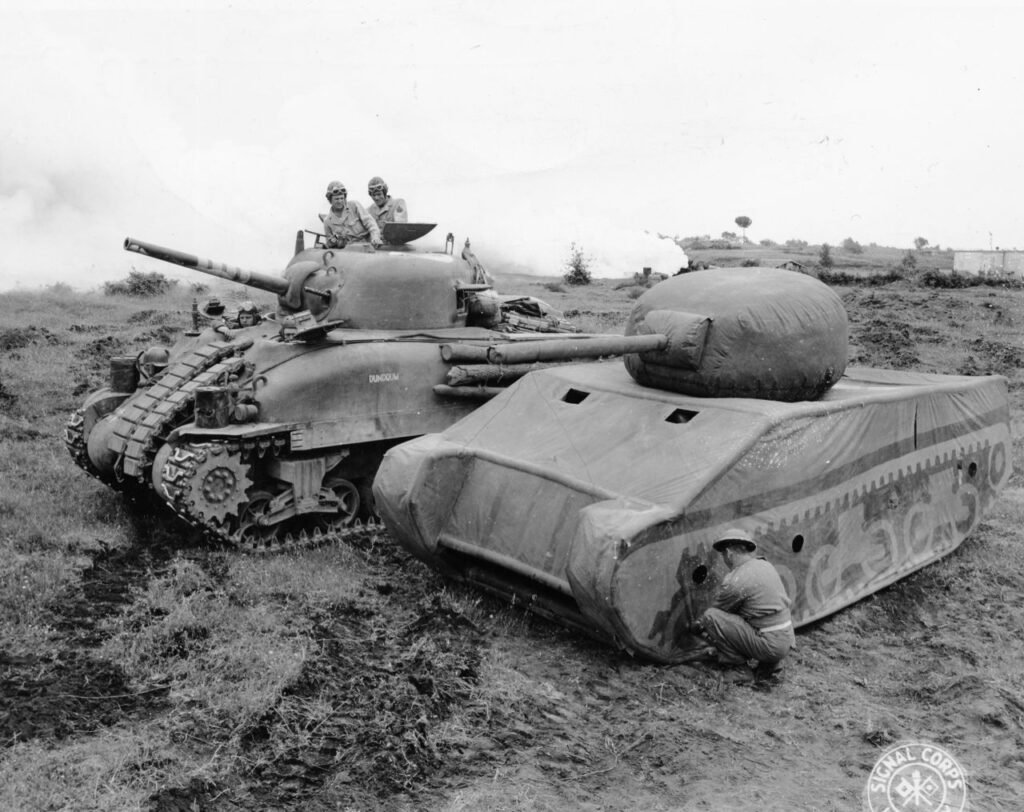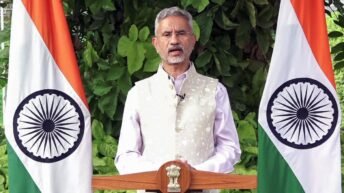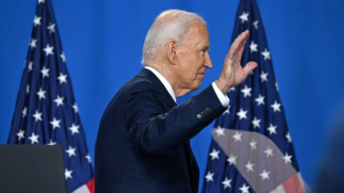|
Listen to article
Getting your Trinity Audio player ready...
|

War is mostly fought by armed soldiers or combatants who pave the path for victory by shedding blood on the battlefield. This is why they are called warriors. However, World War II was a rare occasion where nearly 1100 non-combatants fought a different kind of war along with the combatants and helped transform a sure-shot defeat into allied victory.
These men belonged to a highly secret formation called the Ghost Army officially known as the 23rd Headquarters Special Troops. The most unusual attribute of this unit or formation of the U.S. Army was that it was not staffed by battle-hardened soldiers in the traditional sense but was an uncanny mix of actors, make-up artists, architects, set designers, engineers, lawyers and even magicians – with practically no battlefield experience.
All the members of the Ghost Army were handpicked for their creativity and ingenuity. Their mission was to confuse and mislead the German forces using a masterful blend of illusion and deception. Their artists used elaborate fake military insignia, painted inflatable vehicles, and even created soundtracks of troop movements to project a convincing image of a large, well-equipped force.
Instead of guns and grenades, their arsenal consisted of inflatable rubber tanks, jeeps, artillery pieces, and even airplanes which could be dismantled and carried on the back of trucks to a different location where they could once again be strategically assembled at night to fool enemy reconnaissance.
The Ghost Army’s operations were carefully planned and executed. Working under the cover of darkness, they rapidly deployed inflatable vehicles and sound equipment, creating the illusion of a massive Allied force preparing for an attack. They meticulously crafted fake military markings on vehicles and even fashioned dummy soldiers to complete the deception.
Besides the fake tanks, jeeps, and airplanes the Ghost Army inventory consisted of sound effects of large numbers of tanks, trucks, and marching troops to create the illusion of a phantom army on the move. As a self-contained outfit the Ghost Army employed radio operators who spoke fluent German, and often transmitted fake messages to spread misinformation and thus mislead the enemy.
Despite being non-combatants the unsung heroes of the Ghost Army operated dangerously close to the front lines and faced the risk of capture and execution as spies. Besides, being in the range of German artillery fire, their success hinged on their ability to remain undetected.
Operating under the cover of darkness, the Ghost Army played a crucial role in the success of D-Day, the Battle of the Bulge, and other key moments of the war by diverting German attention away from critical Allied operations. Historians estimate that this saved countless Allied lives in France, Luxembourg, Belgium, Germany, and Italy by misleading German forces and preventing them from concentrating their defences in key areas.
The Ghost Army’s first major operation came in the lead-up to the D-Day invasion. They set up a phantom division facing Calais, France, strategically located across the English Channel away from from Normandy. This ploy convinced the Germans that a major Allied invasion was imminent at Calais and made them draw troops and resources from the true D-Day landing sites.
Once again during Operation Brittany the Ghost Army used inflatable tanks, sound effects, and radio trickery to mislead the Germans about troop locations, allowing General Patton’s army to move undetected.
Using fake radio traffic, dummy equipment, and other deceptive measures the Ghost Army managed to convince the Germans that a real and powerful force called the First United States Army Group (FUSAG) led by General George S. Patton was preparing to invade the Pas-de-Calais. The Allies also used double agents, such as Juan Pujol García (code-named “Garbo”), to feed false information to the Germans. These agents played a crucial role in convincing the Germans that the Allies were planning multiple invasions and that Normandy was a diversionary attack.
The Ghost Army created elaborate decoy headquarters, with tents, fake vehicles, and expertly forged documents. Skilled artists of the unit painted fake traffic signs directing the enemy’s attention away from actual troop movements. The Ghost Army set up fake radio networks and mimicked real Allied troop movements using captured German equipment and pre-recorded sound effects reproducing the rumble of tanks to convince the enemy of a massive army presence.
One of the most notable examples of the effectiveness of the Ghost Army’s tactics is how it bluffed General Hermann Balck, a German general, and his troops to surrender before the American Army in April 1945.
Balck’s forces were cut off and surrounded by American troops near the Harz Mountains in Germany. The Ghost Army used radio broadcasts, sound effects, and other deceptive means to create the impression that Balck was surrounded by a much larger and more formidable force. Believing that he was outnumbered and outgunned, Balck decided to lay down arms rather than fight a hopeless battle. The surrender of Balck and his forces hastened the war’s end in Europe.
The nature of the Ghost Army’s work remained top-secret, and even their fellow soldiers were unaware of their true purpose. This secrecy continued even after the war. The Ghost Army’s contributions remained classified for decades, with their veterans unable to share their stories.
The Ghost Army may have faded from the public eye, but their legacy of deception continues to inspire and intrigue. Their story highlights the power of creativity and unconventional tactics in warfare. It demonstrates the vital role deception plays in military strategy, and how a well-executed illusion can significantly impact the course of a conflict.
The legacy of the Ghost Army lives on for military strategists, reminding them of the power of information warfare and psychological operations. Their most significant contribution lies perhaps in demonstrating the power of imagination and the ability to think outside the box, a valuable lesson that transcends the boundaries of war and remains critical today.
Today, the Ghost Army is finally receiving the recognition it deserves. Museums and documentaries are dedicated to the exploits of its veterans who are finally being honored for their contributions. The story of the Ghost Army has been chronicled in several books and documentaries. Rick Beyer’s “The Ghost Army of World War II” and Adrian Rennie’s “Masquerade: The Amazing World of British Camouflage” offer deeper dives into its wartime secrets. The National World War II Museum in New Orleans also features an exhibit dedicated to its legacy.
The legacy reminds us that in a war, victory can come in many forms, and sometimes, the most powerful weapon is not a gun, but a well-crafted illusion.






Add comment